Understanding line plots Measurement Worksheets for Ages 5-9
10 filtered results
-
From - To
Explore our "Understanding Line Plots Measurement Worksheets" designed specifically for children aged 5-9! These engaging worksheets help young learners grasp the concept of line plots through interactive activities. Students will develop essential skills in reading and interpreting data, encouraging critical thinking and analytical abilities. Each worksheet is crafted to introduce various measurement topics, making it perfect for classroom use or at-home learning. With vibrant illustrations and age-appropriate exercises, children will enjoy practicing their measurement skills in a fun, stimulating way. Help your child master line plots and develop a strong foundation in mathematics with our thoughtfully designed worksheets!
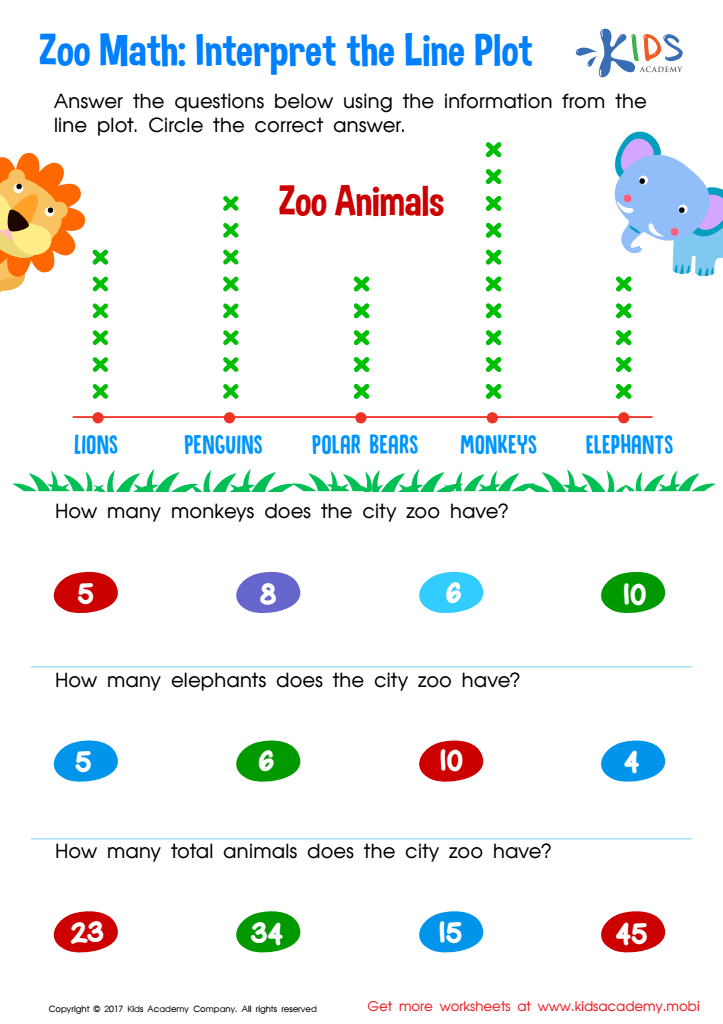

Interpret Line Plot Worksheet
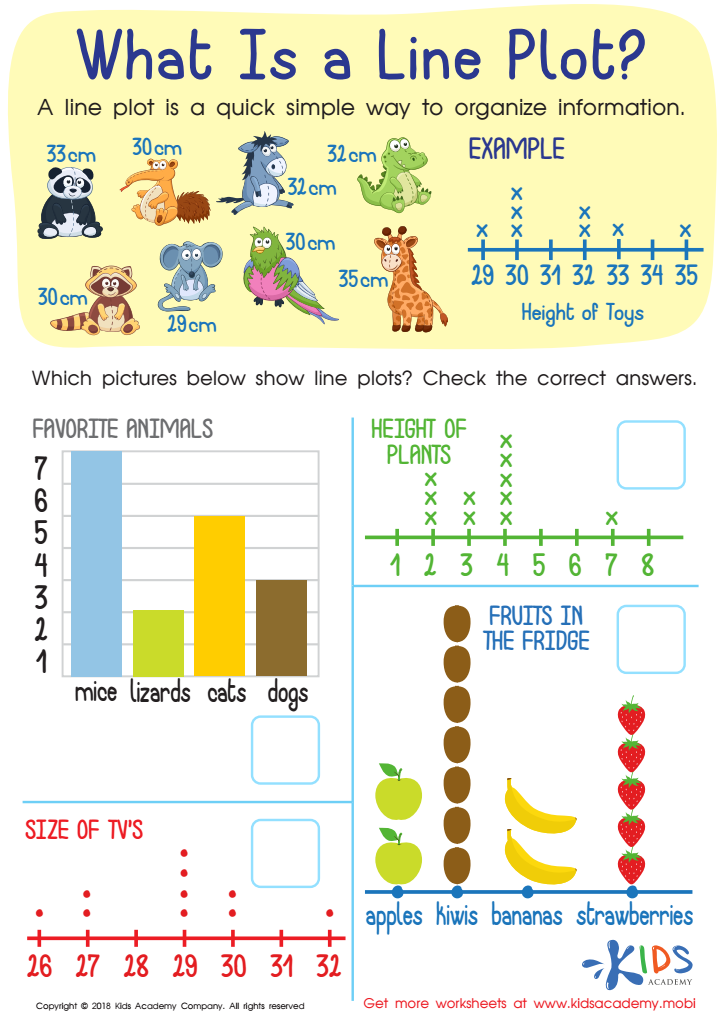

What Is a Line Plot? Worksheet
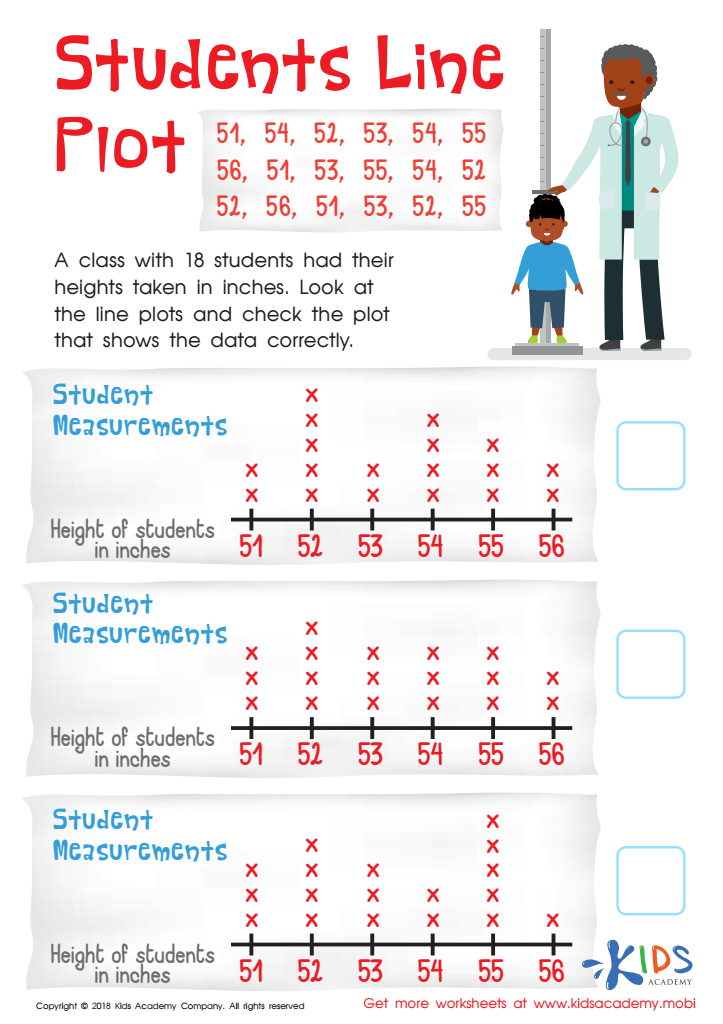

Students Line Plot Worksheet
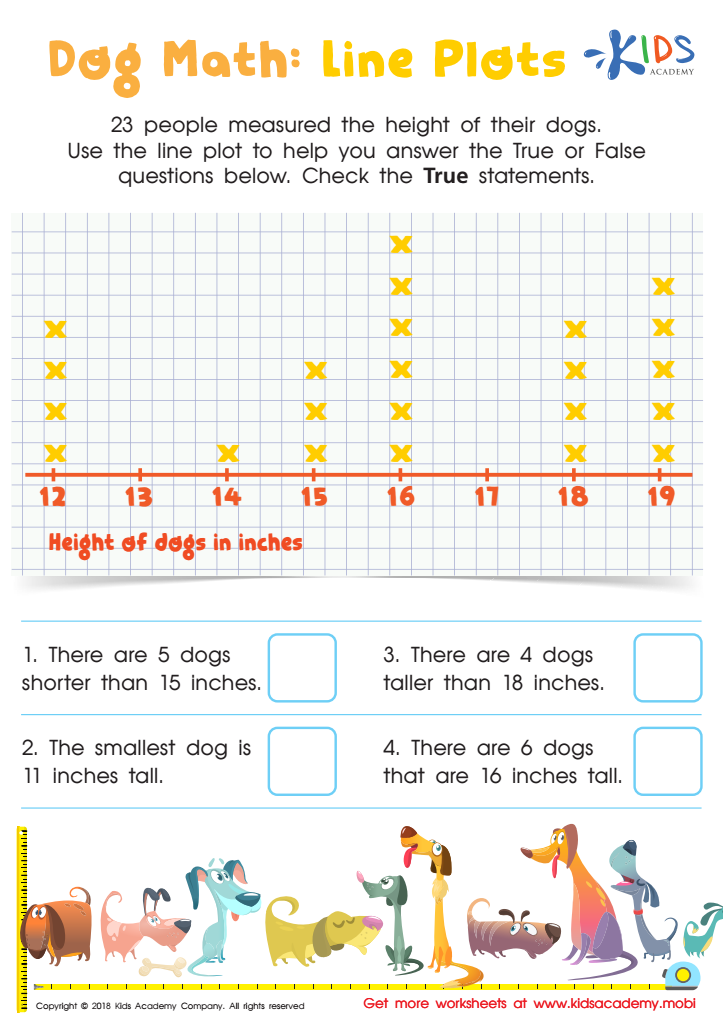

Dog Math: Line Plots Worksheet
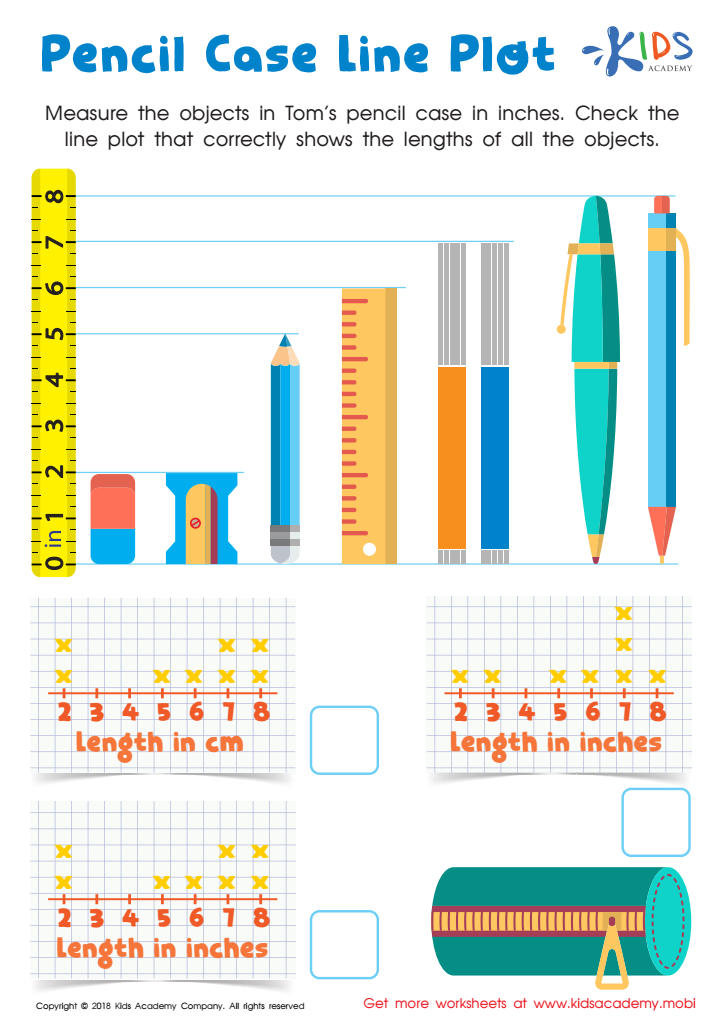

Pencil Case Line Plot Worksheet
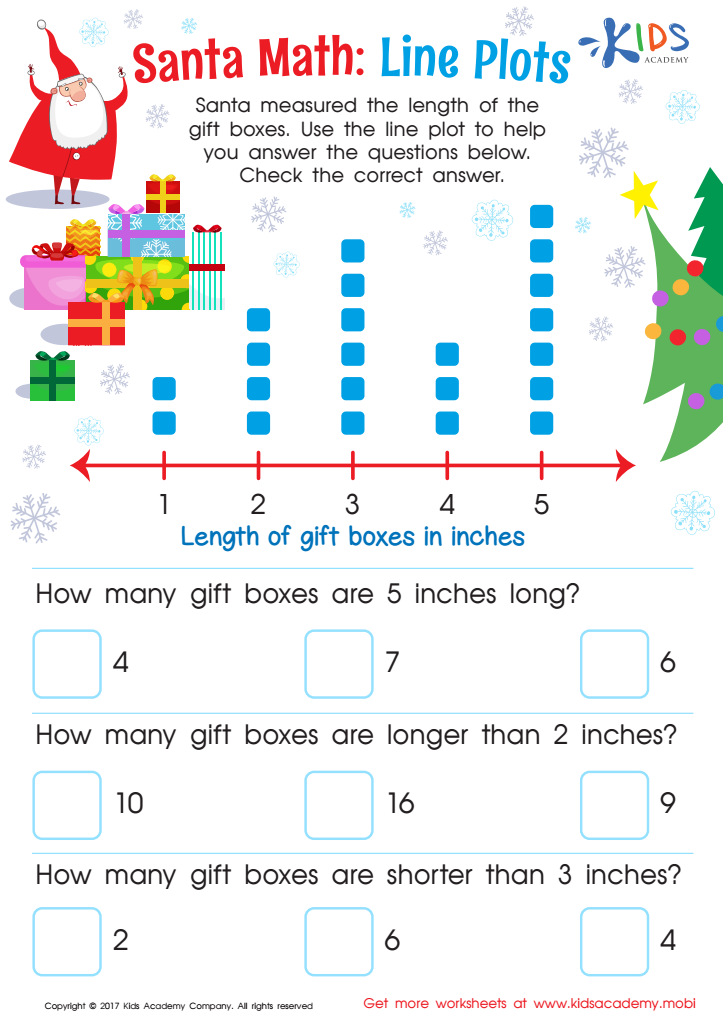

Line Plot Worksheet
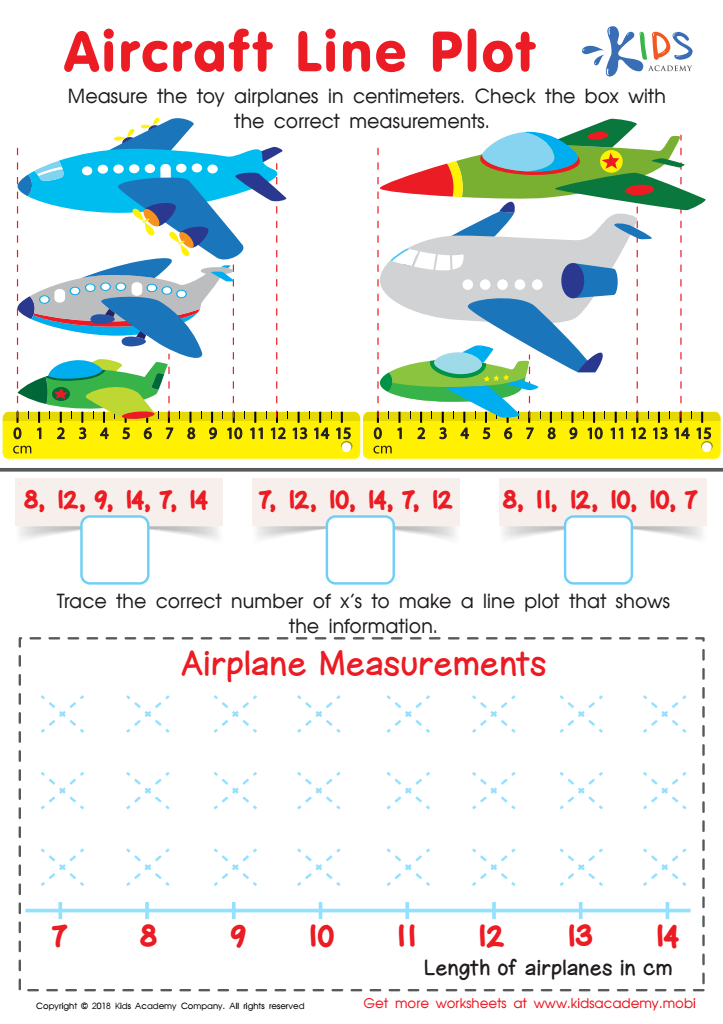

Aircraft Line Plot Worksheet
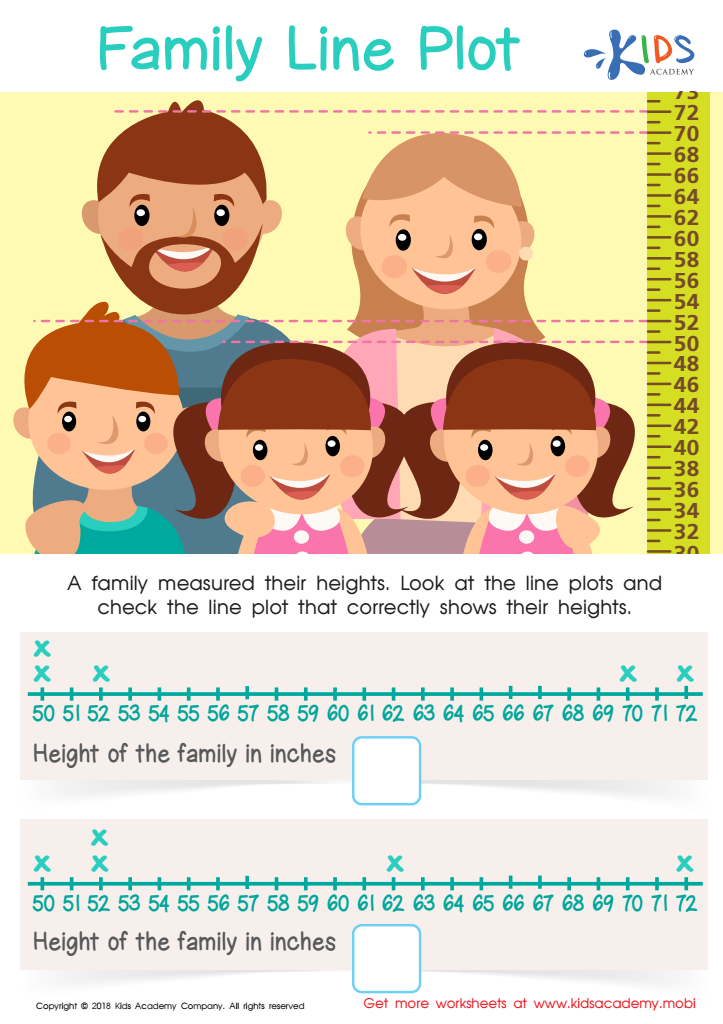

Family Line Plot Worksheet
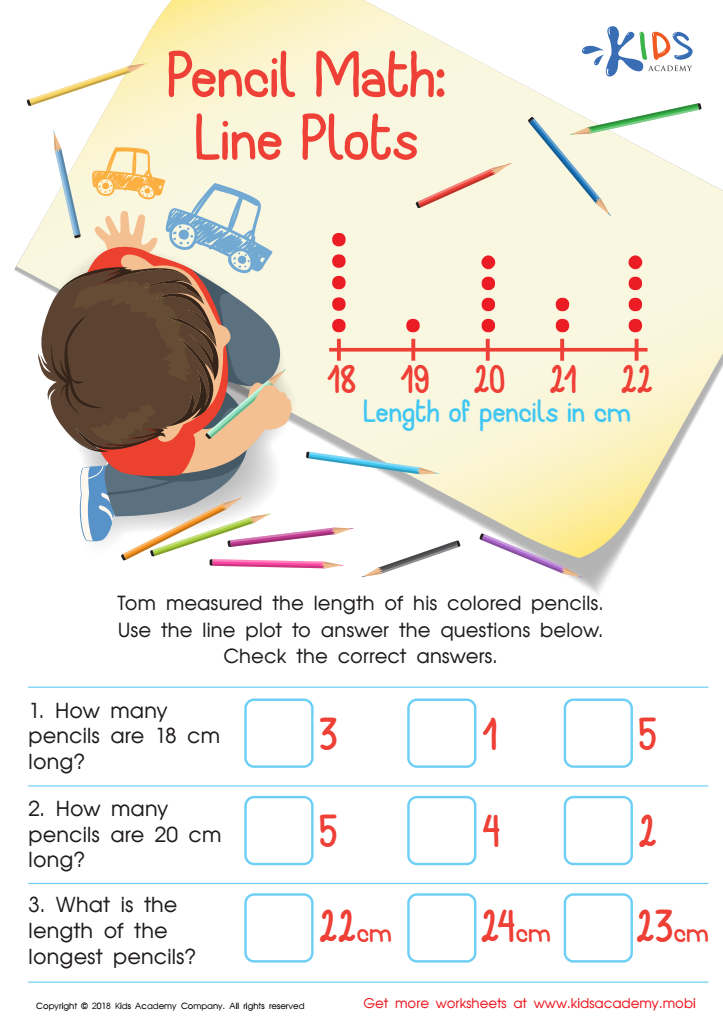

Pencil Math: Line Plots Worksheet
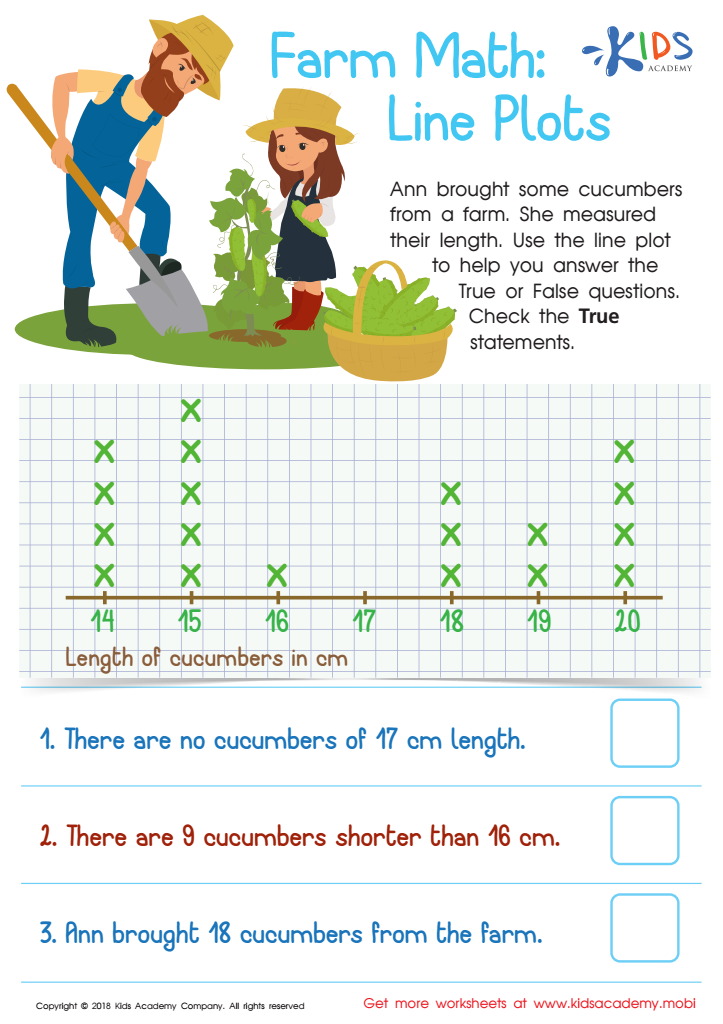

Farm Math: Line Plots Worksheet
Understanding line plots is crucial for children aged 5-9, as it lays the foundation for essential mathematical skills. Line plots visually represent data, helping young learners comprehend and analyze information in an accessible way. For parents and teachers, promoting line plot proficiency supports the development of critical thinking and problem-solving abilities.
By engaging with line plots, children practice measuring and organizing data, enhancing their numeracy skills. This hands-on experience allows them to explore differences in quantities and understand concepts like "more" and "less," fostering a data-driven mindset. Additionally, recognition of patterns and trends in line plots cultivates logical reasoning, aiding in future subjects, such as science and social studies.
Moreover, line plots encourage communication skills as children learn to describe their findings, promoting verbal expression and confidence in presenting information. Understanding this concept also ties into real-life applications, such as tracking progress in activities or comparing observations, making learning relevant and engaging.
Ultimately, by prioritizing line plot measurement in educational settings, parents and teachers empower children with essential skills, preparing them for future educational challenges and nurturing a lifelong appreciation for data-driven inquiry.

 Assign to My Students
Assign to My Students
















